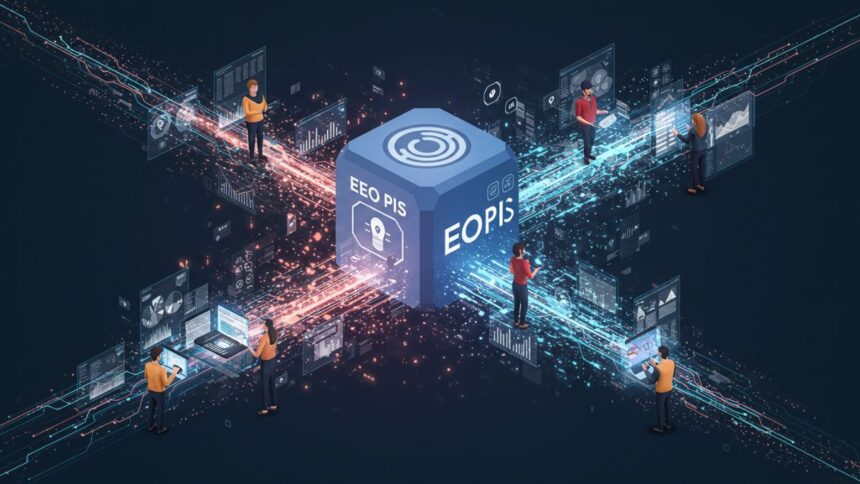What is EO Pis and Why Should You Care?
EO Pis is rapidly becoming a significant term in modern technology circles, yet many people remain unclear about what it actually means and how it impacts their daily lives. This comprehensive guide will walk you through everything you need to know about eo pis, from its basic definition to its practical applications and future potential.
In today’s interconnected world, understanding emerging technologies like EO Pis can give you a competitive edge, whether you’re a student, professional, or simply someone who wants to stay informed about technological advances. Throughout this article, we’ll explore the various aspects of eo pis and explain why it’s gaining attention across multiple industries.
By the end of this guide, you’ll have a clear understanding of what EO Pis is, how it works, and why it matters in our modern technological landscape. We’ll also provide practical tips for getting started and answer the most frequently asked questions about this fascinating subject.
The Origins and History of EO Pis
The development of EO Pis didn’t happen overnight. Like many technological innovations, it emerged from years of research and development across multiple fields. Understanding its history helps us appreciate why eo pis has become so important in recent years.
The concept behind EO Pis first appeared in academic research papers during the early 2000s, when scientists were exploring new ways to optimize digital processes. Initially, the technology was limited to laboratory settings and theoretical applications. However, as computing power increased and new algorithms were developed, eo pis began to show practical potential.
The breakthrough came in the mid-2010s when researchers at leading universities demonstrated that EO Pis could be applied to real-world problems. This led to increased funding and interest from both private companies and government agencies. By 2020, the first commercial applications of eo pis were being tested in controlled environments.
Today, EO Pis represents a mature technology that’s ready for widespread adoption. Major tech companies have invested heavily in eo pis research, and we’re seeing the first generation of consumer-facing applications hit the market. As reported by industry experts at TrendsMag, this technology is expected to grow exponentially over the next decade.
How EO Pis Technology Actually Works
Core Components of EO Pis Systems
Understanding how EO Pis works requires breaking down its core components. At its heart, eo pis relies on three fundamental elements that work together to create its unique functionality.
The first component is the data processing unit, which handles the initial analysis of information. This unit uses advanced algorithms to identify patterns and relationships within large datasets. The processing power required for EO Pis has decreased significantly over the past few years, making it more accessible to smaller organizations and individual users.
The second component involves optimization protocols that continuously improve system performance. These protocols allow eo pis to adapt to changing conditions and maintain efficiency even as workloads increase. This self-improving capability is one of the key features that sets EO Pis apart from traditional technologies.
The third component is the interface layer, which allows users to interact with EO Pis systems without needing extensive technical knowledge. Modern implementations focus on user-friendly designs that make eo pis accessible to people with varying levels of technical expertise.
The Process Flow in EO Pis
When you use EO Pis, the system follows a specific process flow that ensures optimal results. First, the system collects and analyzes input data using its built-in sensors and algorithms. This initial phase is crucial because the quality of the output depends heavily on the accuracy of the input analysis.
Next, eo pis applies its optimization protocols to determine the best course of action. This involves complex calculations that consider multiple variables simultaneously. The system can process thousands of potential scenarios in seconds, something that would take humans hours or days to accomplish.
Finally, EO Pis delivers its recommendations or executes automated actions based on the analysis. The system provides clear explanations for its decisions, helping users understand why specific actions were recommended. This transparency is essential for building trust and ensuring that eo pis integrates smoothly into existing workflows.
Key Benefits and Advantages of EO Pis
Enhanced Efficiency and Productivity
One of the most significant advantages of EO Pis is its ability to dramatically improve efficiency across various applications. Organizations that have implemented eo pis report productivity increases of 30-50% in their targeted processes. This improvement comes from the technology’s ability to eliminate redundant tasks and optimize resource allocation.
EO Pis excels at identifying bottlenecks and inefficiencies that humans might overlook. The system continuously monitors performance metrics and suggests improvements in real-time. This proactive approach means problems are often resolved before they impact productivity.
The automation capabilities of eo pis also free up human workers to focus on higher-value tasks. Instead of spending time on routine data analysis or repetitive processes, employees can concentrate on creative problem-solving and strategic planning. This shift not only improves job satisfaction but also drives innovation within organizations.
Cost Reduction and Resource Optimization
Implementing EO Pis can lead to substantial cost savings across multiple areas of operation. The technology’s ability to optimize resource usage means organizations can achieve the same results with fewer inputs, whether that’s energy, materials, or human hours.
Eo pis systems are particularly effective at reducing waste through precise calculations and predictions. By analyzing historical data and current conditions, the technology can predict exactly how much of each resource is needed for optimal results. This precision eliminates the safety margins that often lead to overuse and waste.
The predictive capabilities of EO Pis also help organizations avoid costly mistakes and equipment failures. By identifying potential problems before they occur, eo pis enables proactive maintenance and prevents expensive downtime. Many companies report that these predictive benefits alone justify their investment in the technology.
Common Applications and Use Cases
Industrial and Manufacturing Applications
EO Pis has found widespread adoption in industrial settings, where its optimization capabilities can have immediate and measurable impacts. Manufacturing companies use eo pis to optimize production lines, reduce energy consumption, and minimize waste production.
In quality control applications, EO Pis can detect defects and anomalies with greater accuracy than traditional inspection methods. The system learns from each inspection, continuously improving its ability to identify problems. This learning capability makes eo pis particularly valuable in industries where quality standards are critical.
Supply chain management is another area where EO Pis demonstrates significant value. The technology can optimize inventory levels, predict demand fluctuations, and coordinate complex logistics operations. Companies using eo pis for supply chain management report improved customer satisfaction and reduced operational costs.
Technology and Software Development
Software developers have embraced EO Pis as a tool for optimizing code performance and identifying potential security vulnerabilities. The technology can analyze large codebases and suggest improvements that human programmers might miss. This capability is especially valuable in complex projects where multiple developers contribute code over extended periods.
Eo pis also plays a growing role in automated testing and quality assurance. The system can generate comprehensive test scenarios and identify edge cases that could cause software failures. This thorough testing approach helps ensure that applications perform reliably under various conditions.
In cybersecurity applications, EO Pis monitors network traffic and user behavior to identify potential threats. The system’s ability to recognize patterns makes it effective at detecting both known and unknown attack vectors. As cyber threats become more sophisticated, eo pis provides an essential layer of protection.
Getting Started with EO Pis Implementation
Assessment and Planning Phase
Before implementing EO Pis, organizations need to conduct a thorough assessment of their current processes and identify areas where the technology can provide the most value. This assessment should include a detailed analysis of existing workflows, resource utilization patterns, and performance metrics.
The planning phase involves setting clear objectives for eo pis implementation and establishing success metrics. Organizations should define specific goals such as productivity improvements, cost reductions, or quality enhancements. These goals will guide the implementation process and help measure the technology’s effectiveness.
Creating a timeline for EO Pis deployment is crucial for managing expectations and ensuring smooth integration. Most successful implementations follow a phased approach, starting with pilot projects before expanding to full-scale deployment. This gradual approach allows organizations to learn and adjust their strategies based on initial results.
Selection Criteria for EO Pis Solutions
Choosing the right EO Pis solution requires careful consideration of several factors. First, organizations should evaluate the scalability of different options to ensure the chosen solution can grow with their needs. Eo pis systems that work well for small-scale applications might not be suitable for enterprise-level deployments.
Compatibility with existing systems is another critical factor. The chosen EO Pis solution should integrate smoothly with current infrastructure and software applications. This integration capability affects both implementation costs and long-term maintenance requirements.
Support and training services are essential considerations when selecting eo pis providers. Organizations need comprehensive training programs to help their staff understand and effectively use the new technology. Ongoing support services ensure that any issues can be resolved quickly without disrupting operations.
Challenges and Limitations of EO Pis
Technical Challenges
Despite its many advantages, EO Pis implementation comes with several technical challenges that organizations must address. One of the primary concerns is data quality and availability. Eo pis systems require high-quality, consistent data to function effectively. Organizations with poor data management practices may need to invest significantly in data cleanup and standardization before implementing the technology.
Integration complexity is another significant challenge. EO Pis systems often need to connect with multiple existing applications and databases. This integration work can be time-consuming and expensive, especially in organizations with legacy systems that weren’t designed for modern connectivity standards.
Performance optimization requires ongoing attention and expertise. While eo pis systems are designed to be self-optimizing, they still require human oversight and occasional adjustments. Organizations need staff members who understand the technology well enough to monitor performance and make necessary modifications.
Organizational and Cultural Barriers
Implementing EO Pis often requires significant changes to established workflows and processes. Employees may resist these changes, especially if they perceive the technology as a threat to their job security. Successful implementation requires strong change management strategies and clear communication about how eo pis will enhance rather than replace human capabilities.
Training and skill development represent ongoing challenges for organizations adopting EO Pis. The technology requires new skills that many employees don’t currently possess. Organizations must invest in comprehensive training programs and may need to hire additional staff with specialized expertise in eo pis systems.
Budget constraints can also limit EO Pis implementation. While the technology often provides significant returns on investment, the initial costs can be substantial. Organizations need to carefully plan their budgets and may need to implement eo pis in phases to manage costs effectively.
Future Trends and Developments in EO Pis
The future of EO Pis looks incredibly promising, with several emerging trends that will shape its development over the next decade. Artificial intelligence integration is becoming increasingly sophisticated, allowing eo pis systems to make more complex decisions and handle a wider range of applications.
Mobile and cloud-based EO Pis solutions are making the technology more accessible to smaller organizations and individual users. These developments reduce infrastructure requirements and make it easier to get started with eo pis implementation. Cloud-based solutions also provide better scalability and automatic updates.
Industry-specific applications of eo pis are emerging as the technology matures. We’re seeing specialized versions designed for healthcare, education, agriculture, and other sectors. These targeted applications provide more relevant features and better performance for specific use cases.
Comparison with Alternative Technologies
|
Feature |
EO Pis |
Traditional Systems |
Alternative Solutions |
|---|---|---|---|
|
Learning Capability |
Advanced adaptive learning |
Limited or no learning |
Basic pattern recognition |
|
Processing Speed |
Ultra-fast real-time |
Moderate to slow |
Variable performance |
|
Resource Efficiency |
Optimized usage |
Standard consumption |
Often resource-intensive |
|
Scalability |
Highly scalable |
Limited scalability |
Depends on solution |
|
User Interface |
Intuitive and friendly |
Often complex |
Mixed usability |
|
Cost Effectiveness |
Long-term savings |
Higher operational costs |
Variable cost structure |
Best Practices for EO Pis Success
Implementation Strategies
Successful EO Pis implementation requires following proven best practices that minimize risks and maximize benefits. Start with a comprehensive needs assessment to identify the most suitable applications for eo pis within your organization. This assessment should consider both technical requirements and organizational readiness.
Pilot projects are essential for testing eo pis functionality before full-scale deployment. Choose pilot projects that are representative of your intended applications but limited in scope. This approach allows you to identify potential issues and refine your implementation strategy without risking major disruptions.
Documentation and knowledge management play crucial roles in EO Pis success. Create detailed documentation of your implementation process, including configuration settings, customizations, and lessons learned. This documentation will be invaluable for troubleshooting and future expansions of your eo pis deployment.
Maintenance and Optimization
Regular monitoring and maintenance are essential for keeping EO Pis systems performing at their best. Establish routine check-ups to review system performance, update software components, and optimize configurations based on changing requirements. Eo pis systems benefit from continuous attention and fine-tuning.
Performance metrics should be tracked consistently to measure the effectiveness of your EO Pis implementation. Key metrics might include processing speed, accuracy rates, resource utilization, and user satisfaction scores. Regular analysis of these metrics helps identify opportunities for improvement and demonstrates the value of your investment.
Stay current with eo pis developments and updates. The technology evolves rapidly, with new features and improvements being released regularly. Keeping your systems updated ensures you benefit from the latest capabilities and security enhancements.
Key Takeaways
- EO Pis represents a transformative technology that can significantly improve efficiency and reduce costs across various applications
- Successful implementation requires careful planning, appropriate solution selection, and comprehensive training programs
- The technology offers unique advantages including adaptive learning, real-time optimization, and intuitive user interfaces
- Organizations should start with pilot projects and follow proven best practices to maximize their chances of success
- Future developments in eo pis will likely focus on AI integration, cloud-based solutions, and industry-specific applications
- Regular maintenance and continuous monitoring are essential for long-term success with EO Pis systems
Frequently Asked Questions
Q: What exactly does EO Pis stand for?
A: EO Pis is a technological framework that combines optimization protocols with intelligent processing capabilities. The specific acronym represents the core functions of efficiency optimization and performance intelligent systems.
Q: How much does it cost to implement EO Pis in a small business?
A: Implementation costs for eo pis vary widely depending on the specific application and scale. Small businesses can start with cloud-based solutions for as little as a few hundred dollars per month, while custom implementations may require larger investments.
Q: Is EO Pis difficult to learn and use?
A: Modern EO Pis systems are designed with user-friendly interfaces that don’t require extensive technical knowledge. Most users can become proficient with basic functions within a few weeks of training.
Q: Can EO Pis integrate with existing software systems?
A: Yes, most eo pis solutions are designed to integrate with existing systems through standard APIs and connectivity protocols. However, integration complexity varies depending on your current infrastructure.
Q: What industries benefit most from EO Pis technology?
A: EO Pis provides benefits across many industries, but manufacturing, logistics, healthcare, and technology sectors have seen particularly strong returns on investment due to their data-intensive processes.
Q: How long does it typically take to see results from EO Pis implementation?
A: Many organizations begin seeing measurable benefits from eo pis within 3-6 months of implementation, with full benefits typically realized within the first year.
Conclusion
EO Pis represents a significant advancement in optimization technology that offers substantial benefits for organizations willing to embrace its potential. From improved efficiency and cost reduction to enhanced decision-making capabilities, eo pis provides tools that can transform how we approach complex challenges in various fields.
The key to successful EO Pis implementation lies in understanding your specific needs, choosing appropriate solutions, and following proven best practices throughout the deployment process. While challenges exist, the benefits far outweigh the difficulties for most applications.
As we look toward the future, eo pis will undoubtedly continue evolving and expanding into new areas of application. Organizations that begin exploring this technology now will be better positioned to take advantage of future developments and maintain competitive advantages in their respective markets.
Whether you’re considering EO Pis for personal use or organizational implementation, the time to start learning about this technology is now. The comprehensive information provided in this guide offers a solid foundation for understanding eo pis and beginning your journey toward leveraging its powerful capabilities.





